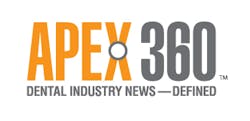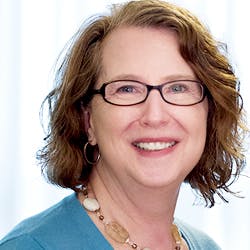Behind the Fraud Triangle: Understanding the origins of embezzlement in dental practices
MANY PRESENTATIONS AND ARTICLES relating to employee fraud issues refer to the Fraud Triangle—a theory developed by Donald Cressey, PhD. The short version of the theory states that in order for a previously honest employee to become an embezzler, three factors must be present. First is a secret need for cash. This can be caused by excessive debt from a grand lifestyle, a gambling obsession, an affair, or anything deemed “socially unacceptable,” and thus not able to be satisfied by ordinary means.
The second component of the Fraud Triangle is justification. This is where the embezzler “reframes” his (or her) activity to become consistent with his self-image. This version of the events becomes not that he is doing something wrong, but rather that he is doing something necessary because it is deserved—or very commonly just a temporary borrowing that will be paid back. That is, the embezzler never stole anything—he merely borrowed it to meet his secret need and fully intending to repay his “borrowings”. Another justification is taking just a little—easy to justify, not likely to even be noticed. Then, a little more and a little more. Each small increment is easy to justify.
The third component is opportunity. If this component is not present, the other two are irrelevant. Because you, the dentist-owner, control the opportunity (or should control it) this component becomes key for you. (There will be discussion of specific topics relating to blocking the opportunity for employee fraud in future articles. Stay tuned . . . )
One aspect often overlooked by those referring to the Fraud Triangle is that Dr. Cressey’s research focused on the elements that must be present to turn an otherwise honest employee into an embezzler. He interviewed more than 500 prisoners and reduced his research sample to those who took a job in good faith and later became an embezzler. His findings were published in a book called Other People’s Money. This book is no longer in print, and I will spare you the story of how I was able to access a copy of it, but I do consider it an achievement.
The September issue of Dental Economics includes an article called "A $998 Ounce of Prevention." In this article, Sandy Baird, Teri Dervenis, and I discuss the steps needed to prevent an embezzler from joining your team and the relatively small cost of taking these steps.
Taking the noted steps minimizes the chances of inviting an embezzler to your practice. Nothing can totally eliminate it. That's the good news. The bad news is that your work is not finished. As indicated earlier, Dr. Cressey’s research focused on the factors that must be present for an honest employee to become dishonest. Things change. The honest person you hired, after going through all the recommended steps, may face unexpected challenges. These challenges can cause an employee to see gaps in your office controls as a solution to their unexpected need.
So, even assuming that your office staff consists of only honest people, the fact that things change mandates that you minimize the opportunity for a previously honest employee to compromise your systems. The controls that must be in place includes a separation of duties. This means, in essence, that tasks must be segregated so that an employee is neither able to perpetuate the fraud nor cover it up.
If you are not certain if you have sufficient segregation of duties in your office, ask for an assessment by your practice manager, your CPA, Ms. Baird, or Ms. Dervenis (their contact information is included in the DE article mentioned previously.)
Future articles will discuss other aspects of eliminating the opportunity for employees to use your assets to meet their secret needs.
ALSO BY JEAN PATTERSON:
The Fraud Blotter: The collateral damage of employee fraud
How is employee fraud like gingivitis?
Confessions of a former domestic production activities deduction hater
Editor's note: This article first appeared in the Apex360 e-newsletter. Apex360 is a DentistryIQ partner publication for dental practitioners and members of the dental industry. Its goal is to provide timely dental information and present it in meaningful context, empowering those in the dental space to make better business decisions.
Subscribe to the Apex360 e-newsletter here.
Dental news and press releasese may be sent to Apex360 editors at [email protected]">[email protected].











